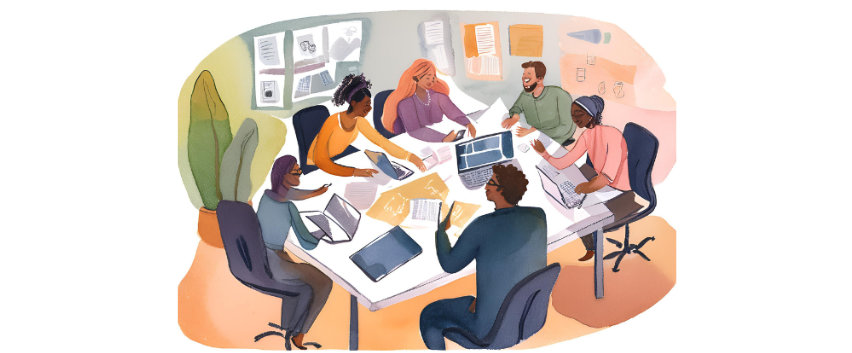7 Empathy Scenarios for Adults

The ability to connect with others on an emotional level — to truly understand a colleague’s perspective — is what separates high-performing teams from the rest.
But empathy isn’t always intuitive. Many adults struggle with when and how to show it in professional settings.
That’s why we’ve compiled 7 real-life empathy scenarios for adults that show how empathy can improve team communication, reduce conflict, and foster psychological safety at work.
Why Empathy in the Workplace Matters
A 2021 report by Businessolver’s State of Workplace Empathy found that 92% of employees believe empathy is undervalued in their workplace, and nearly 1 in 3 say they would leave their job due to a lack of empathy from leadership.
Empathy is no longer a “soft skill” — it’s a core skill. And the good news? It can be practiced and strengthened through awareness, training, and intentional reflection.
7 Realistic Empathy Scenarios for Adults at Work
These scenarios highlight common workplace challenges and how empathy can shift outcomes from tension to trust.
1. A Colleague Misses a Deadline
Scenario: A team member fails to deliver on time — again. You’re frustrated.
Empathetic Response: Instead of jumping to conclusions, you ask, “Is everything okay? I noticed you’ve seemed overwhelmed lately.”
Why It Works: It opens a door to uncover external stressors (e.g., caregiving duties, burnout) and shows concern without blame, fostering trust and accountability.
2. A New Employee Asks “Too Many” Questions
Scenario: A new hire repeatedly asks for help on tasks you consider basic.
Empathetic Response: You think back to your first week and say, “These systems can be a lot at first. Let me walk you through it one more time — then I’ll share a cheat sheet that helped me.”
Why It Works: It frames support as a shared experience, creating psychological safety for learning.
3. A Teammate Is Quiet in Meetings
Scenario: One colleague rarely speaks up, even during brainstorming sessions.
Empathetic Response: After a meeting, you approach them privately: “I’d love to hear your thoughts on today’s topic — I know you bring a valuable perspective.”
Why It Works: It respects different communication styles and encourages inclusion without putting them on the spot.
4. A Peer Takes Credit for Your Idea
Scenario: A coworker echoes your suggestion in a meeting, and leadership seems to credit them instead.
Empathetic Response: You speak to them directly but non-confrontationally: “I’m glad the idea resonated — I’d love for us to share credit when we collaborate like that.”
Why It Works: It addresses the issue while assuming positive intent, leaving room for an honest conversation.
5. You’re Giving Critical Feedback
Scenario: You need to give feedback to someone whose recent performance is slipping.
Empathetic Response: You begin with curiosity: “I’ve noticed a few changes in your recent projects — is there anything impacting your workflow that we could troubleshoot together?”
Why It Works: Empathy doesn’t mean avoiding accountability. It means pairing accountability with humanity.
6. Someone Makes a Biased Comment
Scenario: A coworker makes a subtle but harmful comment during a team conversation.
Empathetic Response: You respond calmly: “I want to pause for a second — that comment could feel dismissive to others on the team. Can we unpack what you meant?”
Why It Works: It models inclusive leadership and creates teachable moments without public shaming.
7. You’re the One Feeling Left Out
Scenario: You’re not invited to an important meeting, and it stings.
Empathetic Response: Rather than assume exclusion, you check in with your manager: “I noticed I wasn’t on the invite — was that intentional, or could I be looped in next time?”
Why It Works: This reframes self-advocacy through empathy — acknowledging that oversights happen, while still asserting your value.
The Communication Boost: How These Scenarios Help Teams
When empathy is woven into daily interactions:
- Team communication improves because people feel seen and heard.
- Trust builds faster, even under pressure.
- Feedback loops become healthier, reducing defensiveness.
- Conflicts de-escalate more easily because people assume positive intent.
These small, everyday moments make or break team dynamics.
Why Training Makes a Difference
While some people are naturally empathetic, most of us need intentional practice. That’s where empathy training comes in — not as a lecture, but as an experience that transforms how we relate to one another.
A 2023 study published in Frontiers in Psychology found that interactive empathy training improved team performance and emotional resilience, particularly in high-stress work environments.
If you’re ready to take empathy from a buzzword to a lived value in your organization, consider working with Empathable — a leader in immersive, science-backed empathy training. Ours programs use real stories and proven methods to help individuals and teams connect on a deeper level.
